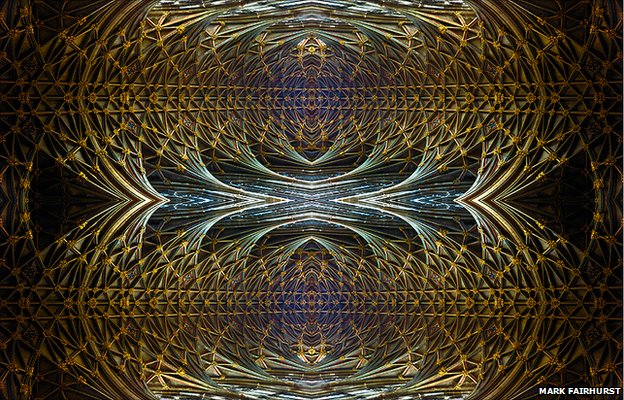2019 has been a year of article publications for me, the first fruits from completion of my PhD in 2017. In that labour of blood, sweat and tears, I considered four photographers as case-studies for new kinds of image/text relations between photography and the Bible. I’ve already introduced Revd Alexander Keith in a previous post, he saw the light of day in the History of Photography 42:4, published earlier this year. Here I’ll introduce Adam Broomberg & Oliver Chanarin briefly, and David Mach in more detail. For another time is that seminal photographer in regard to biblical themes, Julia Margaret Cameron.
Broomberg & Chanarin’s Holy Bible (2013) is a publication I’m very fond of: a Bible with photographs from the Archive of Modern Conflict covering the pages. I’ve written about it twice now, in the Visual Commentary on Scripture as part of my commentary ‘Scaping Sin: Leviticus 15-18‘, and a couple of months ago in ‘Engaging with the Bible in Visual Culture: Hermeneutics between Word and Image, with Broomberg and Chanarin’s Holy Bible’, Religion and the Arts, 23:4. They present what I call artistic ways of exploding the Bible, with photographs of catastrophe. It’s quite a provocative hermeneutic in which they imagine a de-centering and deconstructing effect of war reportage, in which the Bible holds its own with a de-centred and deconstructive theology of God beyond words, God as rupture.
I’ve also been a long-time admirer of David Mach’s photo-collages – large-format composites assembled by hand from magazine and newspaper images. Mach produced over forty of them for an exhibition in 2011 called ‘Precious Light’ (which I reviewed at the time here), all with biblical subjects in celebration of 400 years since the King James Version of the Bible was published. In ‘The Bible as Photo-collage and Tableau: David Mach’s Precious Light Series (2011), I’ve written for the German Bible Society’s online journal, Bible in the Arts (Volume 3) exploring this work in greater depth. In the vein of Kudos’ helpful interface for the presentation of academic writing, I’ll answer their questions about this article here:
Plain language title: What happened when artist David Mach took cuttings from the Bible.
What is it about? David Mach’s ‘Precious Light’ series of photographic collages: huge and with myriad details, these art works show well-known biblical episodes against modern city backdrops with contemporary crowds. I describe Mach’s visual treatment of the text in three ways: the images play to that which is scenic about biblical stories (a realism which is also staged/written like a kind of picture), they give the stories the epic treatment (especially with the wide-angle), and they invite the reader-viewer’s imagination to construct from and with composite, piece-meal knowledge of the stories.
Why is it important? Mach brings the Bible into the present tense, which opens the door onto its present-tense theological bearing. Such theology can be seen through the Bible understood as newspaper rather than as Shakespeare (to paraphrase David J. A. Clines) – as being continually renewed, disseminating, and materially embodied, rather than residual, throwaway and inaccurate. Mach invites a particularly engaging consideration of theology as mediatised with his recourse to imaginative re-collection and re-membering of contemporary media.
Perspectives:
[Precious Light] veered away from just being about the Bible very quickly, to being about people. People living on this earth, like me, with two feet on the ground, and all the things that are happening to us today, in an attempt to try and make this story, that subject matter a contemporary thing, a contemporary art talking about now. I’m not illustrating something from then, I’m trying to talk about us, how we live, and what’s going on now’ … ‘Surreal is too bloody easy. … Collage can be political, contemporary social comment. Because they are real people who exist, every time you cut, you bring something to it – like chopping off Castro’s cigar and putting it in a peasant’s mouth.
David Mach, 2012
Header image (l-r): Holy Bible, 2013, by Adam Broomberg & Oliver Chanarin; Adam & Eve, 2011, by David Mach. Photographs used with permission.



